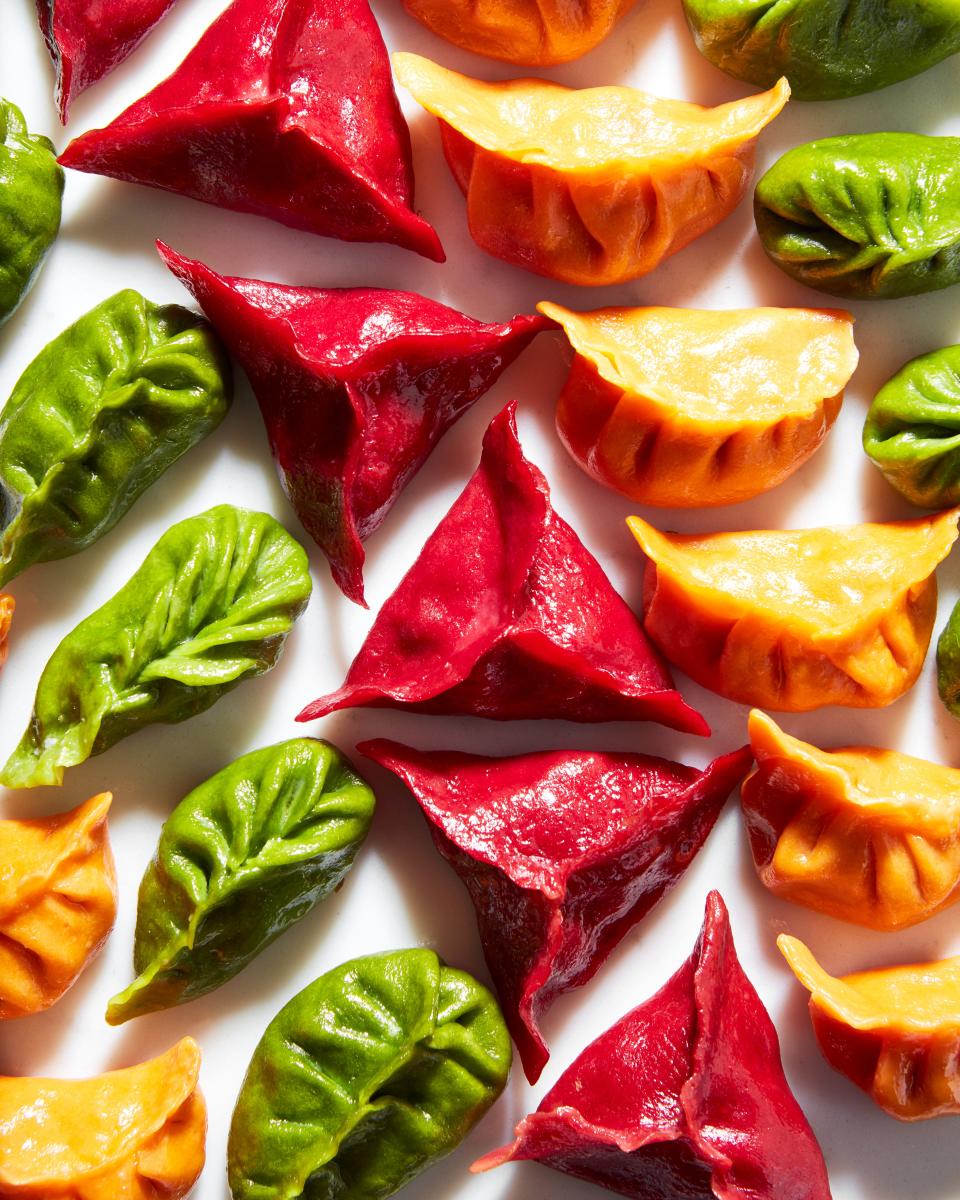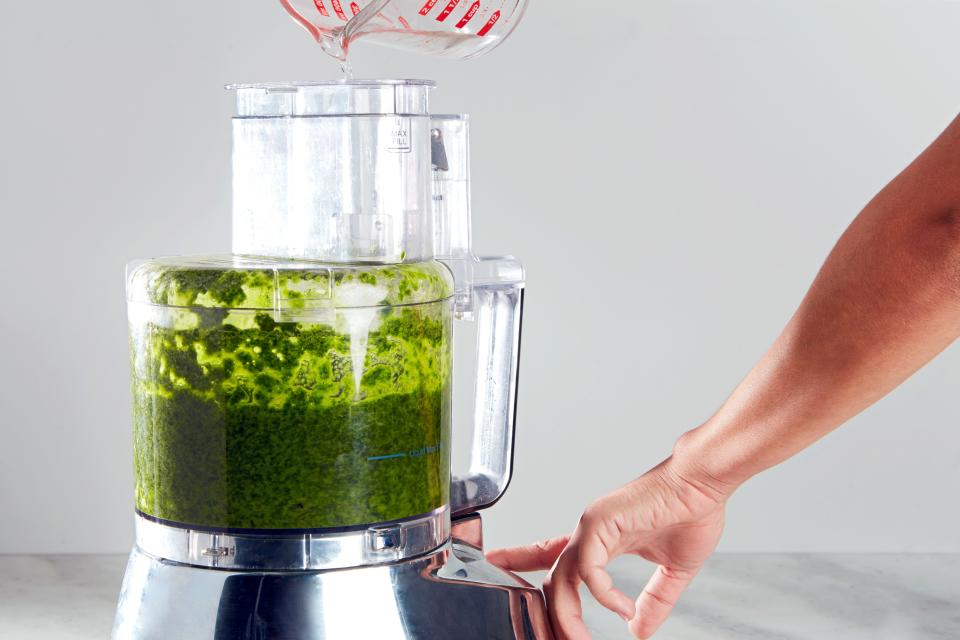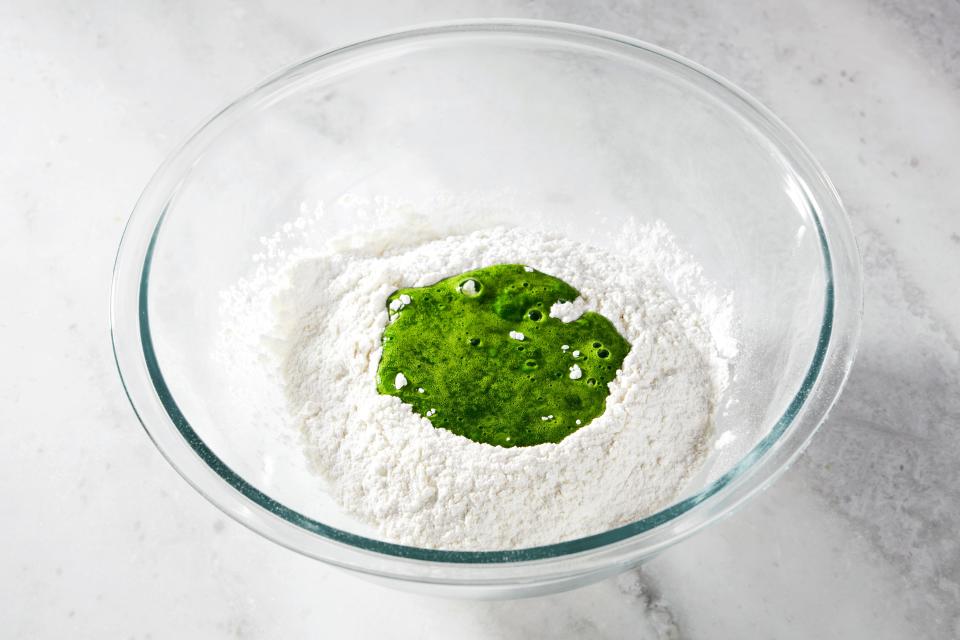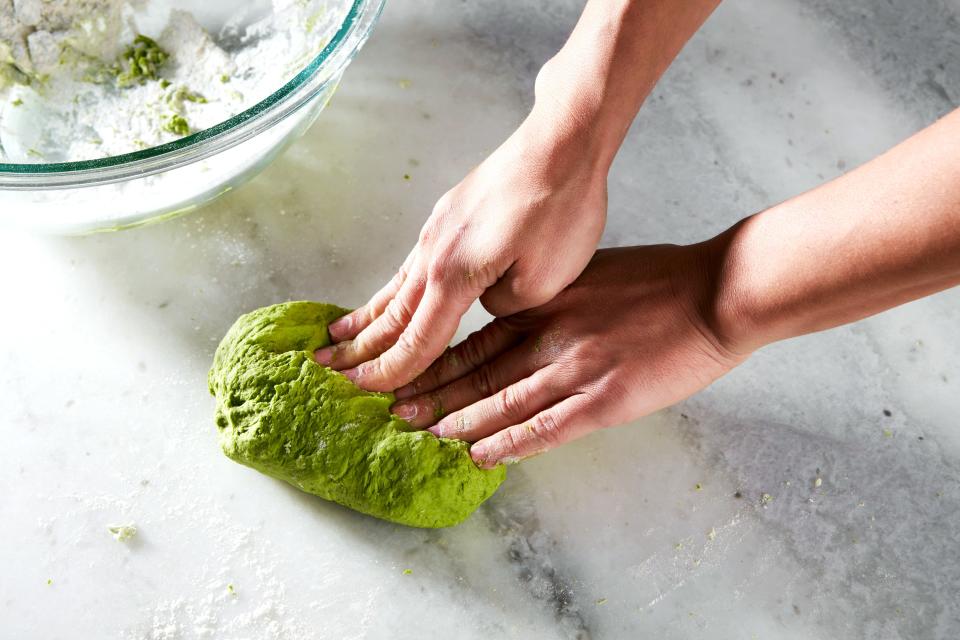How to Make Colorful Dumplings
When she was growing up in northern China, my friend Helen You made her dumpling skins with a lot more than wheat flour. Have some cornmeal lying around? Throw it in the dough. Need to get rid of extra dill? Press it into rolled, flattened wrappers. Dumplings are all about making the most of what you have, and there’s no reason to limit ingenuity to the fillings.
That was then. Now Helen lives in New York and runs a palatial dumpling restaurant and two food court stalls. The restaurant, Dumpling Galaxy, offers over 100 types of dumplings with all kinds of wrappers. A few years ago, Helen and I wrote a dumpling cookbook together, with recipes for about 60 of them. Like the internet skeleton that just wants to eat the big berry, Helen will not be stopped from making more dumplings.
The result for Helen—and for you, if you’re making dumplings at home—is many, many dumplings. At some point, you may need a quick way to tell different varieties apart, so that a vegetarian friend at your dumpling party doesn’t accidentally bite into a lamb-stuffed potsticker. Or maybe you want to boast about your dumpling-making prowess with a photo to share on the internet, arranged in a pretty rainbow configuration, say, which I hear the internet is into. Or perhaps you simply have some extra spinach or carrots wilting in the fridge, like the dill and cornmeal of Helen’s childhood, and need a no-waste solution to use them up.
The solution to all of these problems is to use everyday vegetables to add brilliant color to your dumpling skins. It takes almost no time at all, looks great, and adds a boost of nutrition, too.

Color Dumplings - IG -v1
Helen’s been at this for a while, but it wasn’t until last year that she started plating a rainbow of colorful dumplings at Dumpling Galaxy. “I got a push from friends to try it,” she says, “and I like the idea of making dumplings more eye-catching. I think it makes them more appetizing.” The colorful dumplings have been a hit on Instagram, she tells me; guests can request a plate of dumplings all in the same hue, or as a grab bag. Helen’s even used dark cocoa powder to make an almost-black-skinned dessert dumpling, filled with a whole Ferrero Rocher candy.
Most of Helen’s dumpling wrappers begin with the same basic recipe: 2 cups of all-purpose flour, ¾ cup of water, an egg white (for elasticity), and a pinch of salt. To turn any of these doughs technicolor, she adds a half-pound of vegetable purée to the mix, with the help of a blender or food processor.

Colored Dumplings - Step1 - PROCESS
Spinach is ideal for green skins, Helen says, and I love using it for vegetable dumplings. Beets turn wrappers a heady crimson, and complement lamb or beef fillings. Helen uses pumpkin to shade dumplings yellow, and carrots for orange, which both go well with pork dumplings. She’s still looking for an ideal blue and purple coloring. Blueberries didn’t work out, she tells me. I suggested she try butterfly pea flower tea.
To get started, wash and chop your vegetables into small pieces and toss them in the blender with just enough of your ¾ cup of lukewarm water to get the machine going (this takes ¼ cup for me). Then slowly add the remaining water while blending on medium speed, then high, until you get a smooth purée. You’ll probably have to tamp down the mixture with a wooden spoon a couple times in between pulses to incorporate all the vegetable mass; try not to add extra water along the way. And don’t worry about straining. Helen says she considers visible bits of spinach or carrot fiber in a wrapper to be a feature, not a bug, a reminder that you’re eating actual vegetables.

Colored Dumplings - Step 2 - PROCESS
Once you have your purée, add it to a large bowl containing your flour, salt, and egg white, and mix the dumpling dough like you would any other (we have full instructions for this in the recipe below). Because you’re adding extra moisture to the dough, you’ll need to compensate with additional flour—at least another cup, possibly even two, incorporated in two kneading rounds with a 15- to 30-minute rest in between.

Colored Dumplings - Step 4 - PROCESS
Photo by Joseph De Leo, Food Styling by Pearl JonesDon’t be afraid to be generous with the bench flour either; the dough will show you how much flour it needs depending on the exact moisture content of your vegetables. For this dough, Helen says, your goal is a baby-skin-soft satiny texture that gives way to your finger like a soft gummy candy, or the gel of a shoe insert.
When you’re bulking up a dumpling dough with vegetable matter and extra flour, you’ll either want to scale up your filling amounts by around 50% or store the remaining dough for later. Triple wrapped in plastic wrap, it’ll keep in the freezer for a rainy day, so you can wow yourself with a rainbow of dumplings all over again.
Boiled or Panfried Dumpling Dough
Spinach and Egg Dumplings
Originally Appeared on Epicurious



